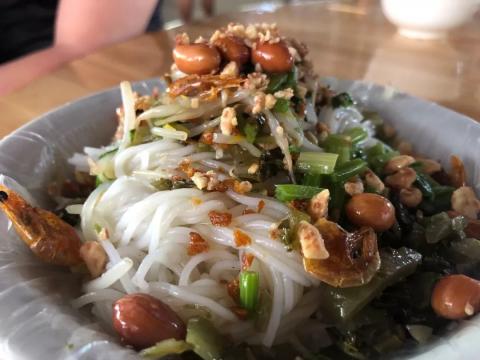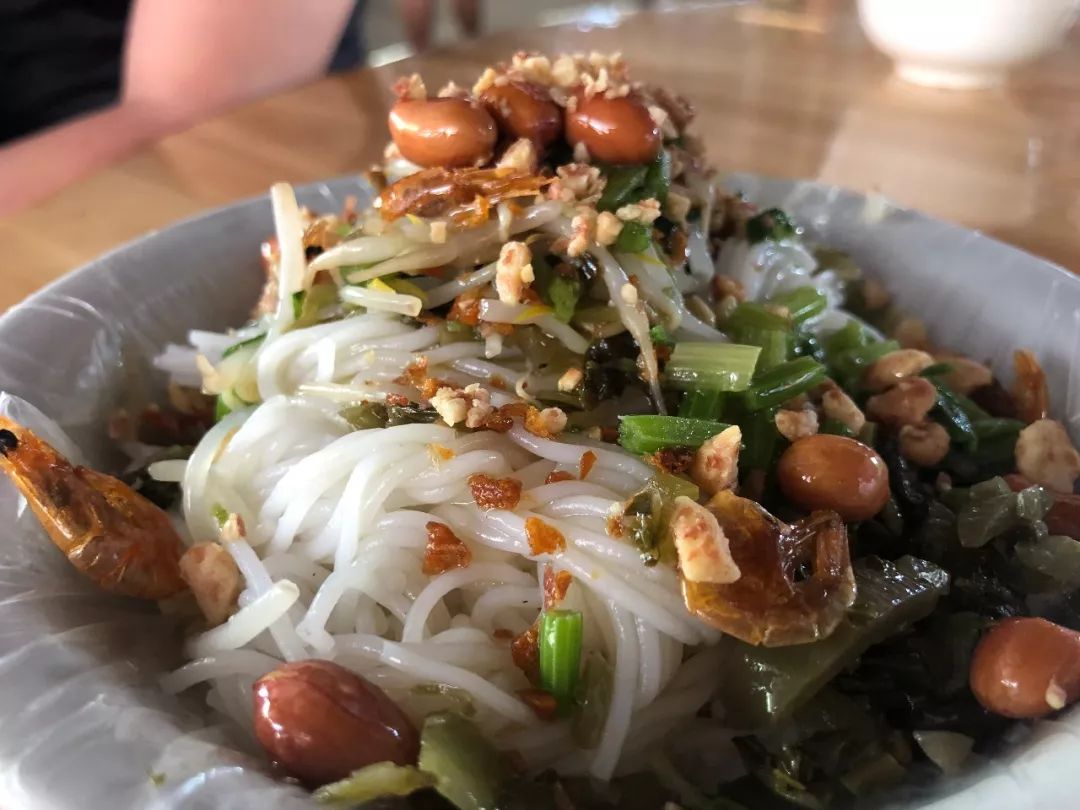
Many people think that prices in Hainan are very high, but this is not necessarily the case. This was not the case in Zhonghe Town, Danzhou City, where we arrived after leaving Lingao.
Here we bought a bowl of rotten rice for 4 yuan, 3 watermelons for 10 yuan, squid for 15 yuan per pound, green coconut for 6 yuan each, and a sun hat for 10 yuan. Very friendly to the people.



Be sure to try the sugar water here. The black sesame tofu sugar water is a major feature here. It is made with black sesame seeds but has the texture of tofu. It is very chewy in the mouth. With the cold sugar water, it is very delicious. Brother Chen especially likes it.


Zhonghe Town is a famous historical and cultural town in Hainan Province. Mr. Su Dongpo lived in Zhonghe for 3 years after being demoted to Hainan, which promoted the cultural and social development of Qiongdao.



Not only is the famous Dongpo Academy here, but the ancient streets during the Republic of China are also very famous.





The ancient well at the intersection has clear water that can be used to identify people.

The traditional culture of Zhonghe Ancient Town is well preserved. Shops selling lion dance props can be seen everywhere on the streets. It seems that business is pretty good.

Overnight at the People's Government Courtyard of Zhonghe Town, I met a few 4-5 year old children who had already started learning lion dance. Whether it was drum beats, gongs or the shape of the lion, they were all in place. It was a symbol of lion dance culture. There are people to inherit the inheritance.



Leaving Zhonghe Town, we arrived at Yangpu New District in Danzhou City, where we saw ancient salt fields that have been passed down for thousands of years.


As soon as I got off the car, I was attracted by a dish that was considered a luxury item in ancient times. This is the famous salt-baked chicken. The skin of the salt-baked chicken baked with sea salt is smooth and smooth, and the bones are rich in flavor. It makes your index fingers move.

The salt-baked chicken in the ancient salt field scenic area only costs 50 yuan, and it also comes with two salty and delicious salt-baked eggs. It is definitely worth a try. But go early, as they won’t be sold by the afternoon.


After eating the salt-baked chicken, we started to observe the ancient salt fields. This ancient salt field has a history of more than 1,200 years, with a total area of 750 acres, more than 7,300 inkstone salt tanks of various shapes, and an annual salt production of 500 tons.



The so-called sea salt refers to coarse salt that crystallizes from seawater after being exposed to sunlight. Generally speaking, sea salt has coarse particles and relatively complex ingredients, and must undergo certain subsequent processing before it can be eaten.


However, in the thousand-year-old salt fields in Yangpu, the sea salt dried using ancient methods is broken into pieces like snow foam. It has moderate saltiness and excellent quality and can be eaten directly. And it is said that the sea salt here is durable in storage, and the longer it is stored, the better it tastes.


The drying of sea salt is inseparable from the rise and fall of the tide. Generally speaking, the height of the salt field is very particular. The sea water will only cover the salt field during the monthly spring tide. Such tides occur 2-3 times every month.

After the tide recedes, the soil in the salt field absorbs a large amount of salt. With the good weather in Yangpu, the salt concentration in the soil increases. The sand is then dragged into the filter tank, and after filtration, relatively pure brine is obtained.

This brine is then exposed to the sun in a salt tank made of basalt, and pure sea salt is obtained.

It can be said that the taste of sea salt is the taste of sunshine and sea.

I explained the process of drying sea salt to Brother Chen. Although he didn’t understand it well, when he tasted a grain of sun-dried sea salt, he fell in love with the taste and licked his fingers. cute.

I think that when he gets older, he will truly understand this, and everything we do will become his implicit growth resource, which is more intuitive and effective than reading picture books and telling stories in the room.
